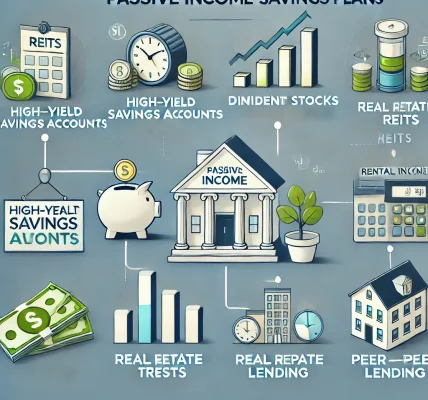When it comes to managing your finances, choosing the right saving plan is one of the most crucial decisions you’ll make. A well-structured saving plan helps you achieve your financial goals, whether that’s for retirement, a down payment on a house, or simply building an emergency fund. However, many people make common mistakes when selecting a saving plan, which can affect their financial stability in the long run.
In this blog post, we’ll walk you through the common mistakes people make when choosing saving plans and offer tips on how to avoid them.
1. Not Defining Clear Financial Goals
One of the most common mistakes people make when selecting a saving plan is not defining their financial goals clearly. Without a clear goal, it’s difficult to choose the right plan that aligns with your needs.
Why It’s a Mistake:
If you don’t have a well-defined financial goal, you might end up choosing a plan that doesn’t suit your time horizon or risk appetite. For example, choosing a short-term saving plan for a long-term goal could result in underperformance.
How to Avoid It:
Before choosing any saving plan, take time to define your goals. Ask yourself questions like:
- Are you saving for retirement, a home, or an emergency fund?
- How soon do you need the money?
- What is your risk tolerance?
Once you have these answers, you can select a plan that suits your financial objective.
2. Ignoring the Risk Factor
Every saving plan comes with its own set of risks, whether it’s market-linked or a fixed option. A major mistake many people make is ignoring the risk involved in their chosen saving plan.
Why It’s a Mistake:
Not considering risk can lead to unpleasant surprises. For example, you might invest in a high-risk saving plan, such as a mutual fund SIP, without realizing that market volatility can lead to losses in the short term.
How to Avoid It:
Evaluate your risk tolerance before choosing a plan. If you’re new to saving or risk-averse, consider low-risk options like fixed deposits (FDs) or Public Provident Fund (PPF). On the other hand, if you’re comfortable with market fluctuations and are saving for the long-term, SIPs and equity mutual funds could be suitable.
3. Not Comparing Different Saving Plans
Many people choose the first saving plan they come across without doing proper research. This can lead to missed opportunities for better returns or more suitable options.
Why It’s a Mistake:
Different saving plans offer different features such as interest rates, lock-in periods, and tax benefits. Without comparing these features, you may end up choosing a plan that doesn’t provide the best returns or doesn’t align with your needs.
How to Avoid It:
Research thoroughly before committing to any saving plan. Compare factors like:
- Interest rates
- Lock-in period
- Tax benefits
- Liquidity options (whether or not you can easily withdraw your money)
Look at reviews, consult financial experts, and use online tools to make an informed decision.
4. Overlooking the Impact of Taxes
Another common mistake is failing to consider the tax implications of a saving plan. Many people focus solely on the returns and ignore how taxes can impact their earnings.
Why It’s a Mistake:
Some saving plans come with tax exemptions, while others are taxable. Ignoring these factors can result in lower returns than expected.
How to Avoid It:
Make sure to understand the tax treatment of your chosen saving plan. For example, PPF and ELSS (Equity-Linked Savings Scheme) offer tax benefits under Section 80C of the Income Tax Act. On the other hand, interest earned on fixed deposits may be taxable.
If tax saving is a key factor for you, prioritize plans that offer tax benefits. For long-term savings, also consider options like NPS (National Pension Scheme) or tax-saving FDs.
5. Underestimating the Importance of Liquidity
Liquidity refers to how easily you can access your money. Some saving plans lock your funds for a certain period, while others offer greater flexibility. Many people make the mistake of choosing a saving plan without considering their liquidity needs.
Why It’s a Mistake:
If you choose a plan with a long lock-in period, such as PPF, but later need emergency funds, you may face penalties or missed opportunities. On the other hand, highly liquid plans may offer lower returns in comparison.
How to Avoid It:
Consider your liquidity needs before choosing a saving plan. If you need quick access to funds, you might want to avoid long-lock-in plans. Instead, choose options like liquid funds, high-interest savings accounts, or recurring deposits that provide both flexibility and reasonable returns.
6. Failing to Review the Plan Regularly
Once you select a saving plan, you might feel like your work is done. However, failing to review your plan regularly is a common mistake that can hurt your long-term goals.
Why It’s a Mistake:
Your financial situation and goals may change over time, and your saving plan may no longer be the best option. Additionally, interest rates and market conditions can change, making it essential to adjust your plan accordingly.
How to Avoid It:
Review your saving plan at least once a year to ensure it still aligns with your goals. Make adjustments if necessary, such as switching to a higher-interest plan or rebalancing your investments.
7. Not Considering Professional Advice
Sometimes, individuals think they can handle everything on their own, skipping the step of seeking professional financial advice. This can lead to choosing the wrong plan or failing to fully understand the fine print.
Why It’s a Mistake:
A professional advisor can help you identify the best saving plans based on your goals, risk tolerance, and financial situation. They can also help you avoid costly mistakes and guide you on how to maximize returns while minimizing risk.
How to Avoid It:
Consider consulting a certified financial planner to help you assess your options and select the most appropriate saving plan for your needs. They can provide valuable insights and ensure that you’re on the right path to achieving your financial goals.
Conclusion:
Choosing the right saving plan is essential to your financial well-being, but it requires careful thought and planning. By avoiding these common mistakes and following the tips outlined above, you can ensure that you select a plan that aligns with your goals, risk tolerance, and financial situation. Remember, financial planning is a marathon, not a sprint—start early, stay informed, and review your plans regularly to set yourself up for success.



